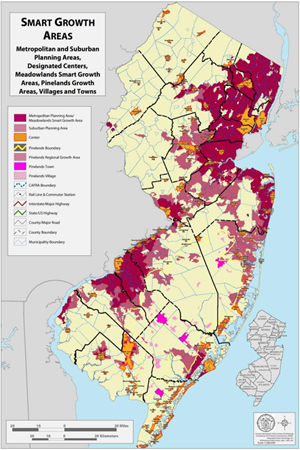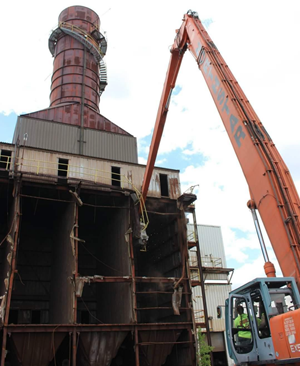New Jersey’s location in proximity to New York City and within a short drive of millions of consumers makes it a prime location for warehousing and logistics for an e-commerce industry that has boomed since the pandemic. Municipalities around the state, however, are grappling with where to put proposed distribution and fulfillment centers.
Donna Rendeiro, executive director of the New Jersey Office of Planning Advocacy, and Wilda Diaz, former mayor of Perth Amboy in Middlesex County, presented on the issue during the October 17 Freight Initiatives Committee meeting.
The state recently issued guidance to help municipalities determine how, or whether, to allow warehouses. Planning and zoning boards around the state have been inundated in recent years with applications to build giant warehouses, distribution and fulfillment centers.
 “The guidance we’ve put together does acknowledge the importance of the logistics industry," Rendeiro said, noting that warehousing and logistics accounts for about 12 percent of New Jersey’s employment – about one in eight jobs. “It really is critical to our economic sustainability. However, because the market is so robust right now, there’s a lot of pressure on the municipalities and we must make sure that this development is done by right sizing and right locating so that we don’t negatively impact our environmental resources and our infrastructure,” she said.
“The guidance we’ve put together does acknowledge the importance of the logistics industry," Rendeiro said, noting that warehousing and logistics accounts for about 12 percent of New Jersey’s employment – about one in eight jobs. “It really is critical to our economic sustainability. However, because the market is so robust right now, there’s a lot of pressure on the municipalities and we must make sure that this development is done by right sizing and right locating so that we don’t negatively impact our environmental resources and our infrastructure,” she said.
Warehouse developers have historically favored locations with access to the port but over the past decade that need and market desire has pushed development into farmland, according to Rendeiro, and that’s added to the stress of environmentally sensitive areas.
A number of municipalities and counties asked the state to help determine what their land use practices should be. “We don’t encourage [state] legislation because we do understand home rule; it’s a locally driven process but we think it’s important to provide this guidance," Rendeiro said.
The state’s guidelines encourage a proactive rather than reactive approach, providing municipalities factors to consider when developing or updating their master plan and ordinances. The guidelines also support a regional approach to siting warehouses, she said. “A proactive approach allows for municipalities to control their own destiny.”
Rendeiro pointed to the state’s Local Redevelopment and Housing Law as an important tool in redeveloping brownfields, which are underutilized, and often contaminated, former industrial sites. She called it “a phenomenal law” that gives eligible municipalities the ability to work with a developer to negotiate off-site improvements that they might not otherwise be able to require.
Former industrial sites throughout Perth Amboy that once employed thousands left the city with a legacy of contamination that was unaddressed for many years. Diaz credited the city with having a vision early-on to address the sites by creating the Perth Amboy Redevelopment Agency (PARA) in 1997 – an agency she chaired -- and adopting a redevelopment plan.
 One of the projects to come out of that plan is a Home Depot distribution center, which Diaz said has changed the community. The project invested $500 million for new construction and more than $10 million to remediate 92 acres of contaminated land at a former industrial site, opening a logistics center that created more than 500 jobs. In negotiations, the city was able to acquire open land and had a developer construct an amphitheater as well as major road repairs, infrastructure improvements and other enhancements.
One of the projects to come out of that plan is a Home Depot distribution center, which Diaz said has changed the community. The project invested $500 million for new construction and more than $10 million to remediate 92 acres of contaminated land at a former industrial site, opening a logistics center that created more than 500 jobs. In negotiations, the city was able to acquire open land and had a developer construct an amphitheater as well as major road repairs, infrastructure improvements and other enhancements.
More than 500 acres of contaminated sites in Perth Amboy have been remediated, which attracted and generated nearly $1 billion of new construction projects, implementing $25 million in infrastructure improvements, generating almost $15 million in tax ratables and more than 3,000 new jobs for local residents, Diaz said.
“At the end of the day, residents want to live and work in their community,” Diaz said adding that residents are happy to see the abandoned sites in use again. She said many people remembered “someone in their family who worked in those industrial sites, so we knew how important it has been for our community.”